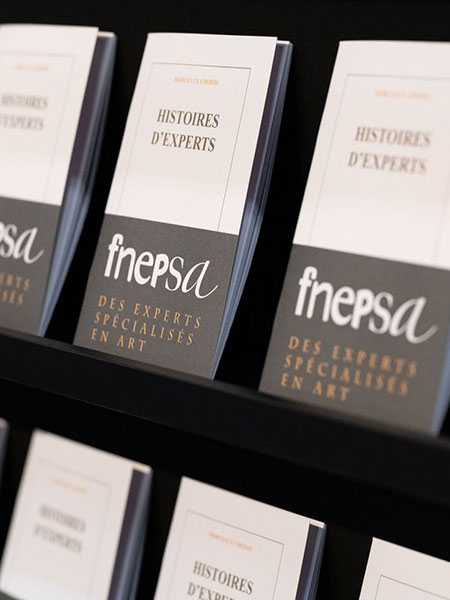History of printing by Isabelle Scappazzoni
For centuries, the only way to produce a book was to write it entirely by hand. Even if several scribes copied the same text, they could only produce a small number of copies. As the demand for books continued to grow, it became necessary to find a faster and cheaper way to reproduce them.
Europeans were slow to discover the printing press. The printing press, invented more than 1,000 years ago in the Far East, was not in use in the West until the end of the 15th century. It was during this period that a series of technical innovations were developed: the manufacture of paper from rag progressed around the Mediterranean, in Sicily, Spain and France, and finally reached the Germanic regions. Its manufacture was the scene of the first mechanisation, around water mills and "piles". A much more abundant and less expensive medium than parchment, it was first used for the least precious documents, accounting documents, various archives and everyday manuscripts.
Xylography (wood engraving) was the second major innovation that appeared in the West around 1370. Little is known about the production and use of the first xylographic images. The subjects are generally religious, except for the large production of playing cards. The oldest wood found in France is the famous "Bois Protat" dated 1370. Germany, which saw the birth of the xylographic book (xylography, from the Greek xulon: "wood" and graphein: "to write"), was the first country which, thanks to the progress of its typographic art, was able to associate wood engraved in movable characters with the printed book. In the 15th century, the main purpose of wood engraving was to decorate printed books, taking the place of the miniature in manuscripts.
These new techniques (paper and wood engraving) favoured a wider diffusion of the written word throughout the cities of the early 15th century. The invention attributed to Gutenberg is the logical continuation of these innovations begun in the late Middle Ages.
Gutenberg
Inventor not only of printing (i.e. leaving an inked impression on a sheet of paper), but also of the manufacture of typographic characters (types) by cutting punches.
A quotation in a royal order issued in 1458 by Charles VII mentions: "Johan Gutenberg chevalier, demourant a mayence pays dallemagne, homme adextre en tailler de caractères/de poinçons auoit enlumière Linvention de Imprimer par poinçons..." (L. Hellinga, Nicolas Jenson et les débuts de l'imprimerie à Mayence, Revue française d'histoire du livre, no. 118-121, Ed. Droz, Geneva 2004, pp.25-54).
Gutenberg invented typography, i.e. movable metal type (developed around 1450), as well as a printing press and an ink that allows printing on both sides of the paper.
It offers two advantages: the metal is resistant to wear and tear, and the typeface can be used and replaced flexibly. Within fifty years, printing presses were installed in almost all European states.
For almost four centuries, printers used presses modelled on Gutenberg's, although steel later replaced wood in their construction.
Typeface
For a xylographic book, the letters are carved in relief on wood (in the direction of the wood fibres). On a wooden plate, a whole page of a block is engraved, character by character, with the letters upside down; then the block is inked and a sheet of paper is pressed on top.
Despite the lengthy preparation time, the process is cost-effective compared to the time it takes to copy manuscripts, as many copies can be produced. On the other hand, it also has disadvantages: the wear and tear of the wood, the lengthy preparation, the impossibility of correcting errors and the fact that the wood is then fit for burning.
The metallographic book appeared in the goldsmiths' world in the 14th century. The casting of a typeface begins with the making of a punch. The engraver cuts out a character, a number, a musical note, etc. on the upper part of a steel piece. It is at this stage that the aesthetic quality of the typeface is determined.
The punch is then hammered into a block of copper to create an impression: the die. The block of copper deformed by the hammering must still be adjusted to obtain a matrix that fits the mould. An infinite number of dies can be hammered out with one punch.
The die is then fixed in a mould and a mixture of lead, tin and antimony is poured into it. The result is a piece of metal with an inverted character imprint on one side. A single die can be used to cast tens of thousands of identical characters, which was revolutionary at the time.
The actual printing process took place as follows: the composition placed on the press was first inked with stamps. The slightly moistened paper was then fixed between the frisket (a frame) and the tympanum was then tilted with a dry movement over the inked composition.
A pulley was turned to advance the marble under the plate, which was lowered onto the form by turning a screw with an iron bar. Thus, the pressure of the plate produced an impression of the characters on the paper. The printed sheet was then detached and dried.
In one day, a single press could produce 1250 sheets printed on both sides, in the case of a folio book.

* Required fields
75001 Paris
France
